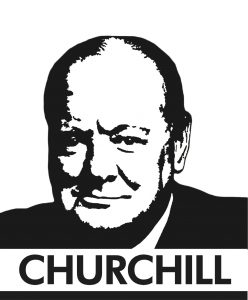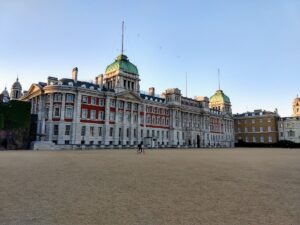
Finest Hour 182
The Mistaken View of Churchill’s First World War “Mistakes”
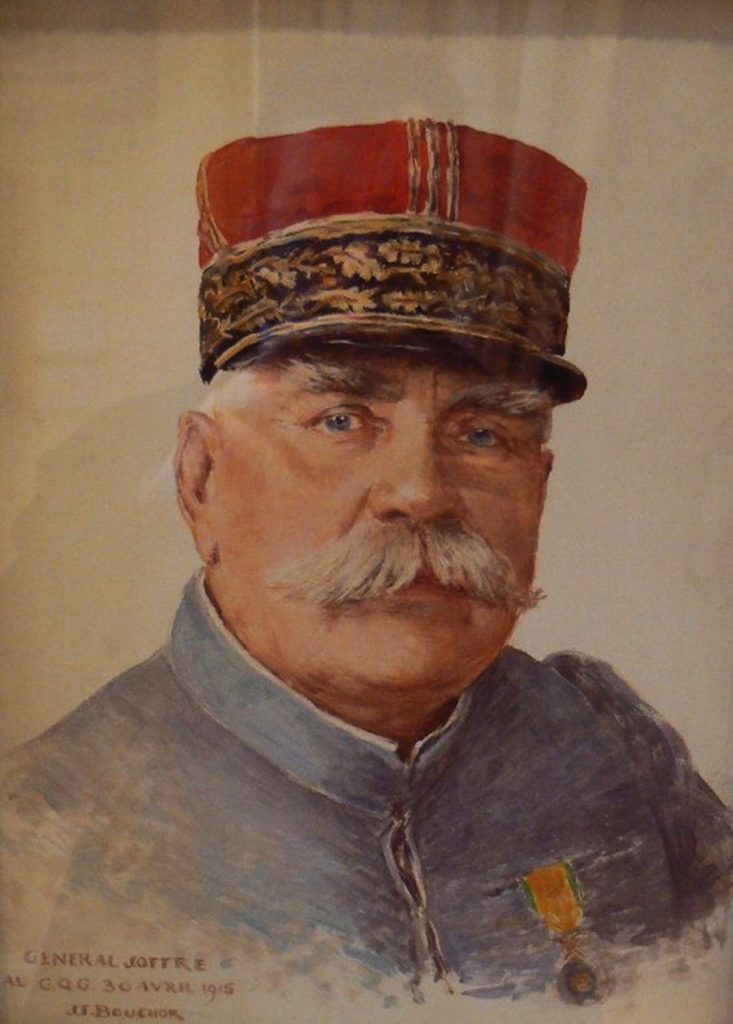
French General Joseph Joffre
December 19, 2018
Finest Hour 182, Fall 2018
Page 14
By Allan Mallinson
Allan Mallinson’s Fight to the Finish: The First World War—Month by Month is published by Penguin Random House (UK) in October 2018.
A common verdict on Churchill’s First World War is that he was the perpetrator of costly disasters, but that he learned from his mistakes. Consider this, from the Imperial War Museum’s website:
At the outbreak of war in 1914, Churchill was serving as First Lord of the Admiralty. In 1915 he helped orchestrate the disastrous Dardanelles naval campaign and was also involved in the planning of the military landings on Gallipoli, both of which saw large losses. Following the failure of these campaigns, Churchill was demoted and resigned from government. He became an officer in the Army and served on the Western Front until early 1916. In 1917, under Prime Minister David Lloyd George’s coalition government, Churchill was appointed Minister of Munitions, a position he held until January 1919.
Churchill’s First World War in a little more than a hundred unfortunate words.

2025 International Churchill Conference
He did not of course “become an officer in the Army”—he already held the rank of major in the Territorial Force (in the Oxfordshire Hussars)—but that is a minor point compared with the implication that the failure of the Dardanelles/Gallipoli campaign was in significant part due to him. Or with the omission of any mention of the tank, the battle-winning innovation that would almost certainly not have been fielded so early had it not been for Churchill’s creation of the Admiralty Landships Committee. No mention either that his decision to keep the naval reservists with their ships after the practice mobilization in early July 1914, rather than standing them down to return home, gained the Admiralty precious days when war came. Or, indeed, of his unilateral decision on 28 July to order the Grand Fleet to steam from its grand review at Spithead (in the Solent, Southern England) “at high speed, and without lights” through the Straits of Dover into the North Sea and onwards to its battle station, the lonely Orkney anchorage of Scapa Flow. In one preemptive stroke, Britain had gained command of the North Sea and thereby the English Channel. It was one of the decisive moves of the war, yet it goes largely unacknowledged. And it was taken by the youngest member of the Cabinet—who was considerably younger than the senior leadership of the Royal Navy.
At least the Imperial War Museum pays tribute to Churchill’s leadership in the Second World War: “Churchill made planning and decision-making—both political and military—simpler and more efficient.”
The inference, however, is that Churchill inter alia had learned from his mistakes in the First World War and that this was somehow his great redemption. This view is facile. Indeed, to characterize Churchill’s strategic and military judgement in the First World War as deficient— at best the understandable result of youthful inexperience (in 1915 he was, after all, only forty), or at worst the unforgivable upshot of an imperious impetuosity—is not only facile but plain wrong.
Born Leader
Churchill had been an unusual Victorian cavalry subaltern, to say the least. In India he had thrown himself into the usual sports—polo especially— and relished the skirmishing on the North-West Frontier, but he had also demonstrated a precocious interest in strategy. He was of course drawn to his Marlburian ancestry. John Churchill, 1st Duke of Marlborough, the Captain-General, was England’s greatest practitioner of the art—more so even than the great Duke of Wellington. But young Winston was able to combine this study with direct experience. By time he was twenty-eight he had seen four major campaigns in three continents—and by later observation on two occasions the annual German army manoeuvres. The Duke of Wellington used to say that he learned everything about the art of war by observing how not to do it. Churchill could certainly have said something of the same—but he could also have added that he had absorbed a very great deal from reading about how not to do it (as well as reading of how to do it by his study of Marlborough and Wellington). And by thinking continually and originally. But in truth, ultimately such men as Marlborough and Wellington—and a fortiori Churchill—are born rather than made.
If there is any doubt about Young Winston’s exceptional grasp of the higher direction of war (“grand strategy”) and campaigning, rather than of mere tactics, then The River War (1899) should persuade. So would an examination of Churchill’s speeches after entering parliament in 1901. He was a soldier through and through, but in 1903 he believed the Tories’ plans to increase the Army Estimates—based on no very obvious requirement—was misguided. Consider both the wisdom (and majesty) of this line from his speech to parliament, as reported in Hansard: “He did not defend unpreparedness, but, with a supreme Navy, unpreparedness could be redeemed; without it, all preparation, however careful, painstaking, or ingenious, could not be of any avail.”1
Conflicting Forecasts
Churchill’s superior strategic intuition (although unrecognised at the time) was never better demonstrated, however, than on 23 August 1911, during one of the periodic crises in far-away places which seemed to threaten the peace of Europe—in 1911 it was Agadir, Morocco. The prime minister, H. H. Asquith, had called a meeting of the Committee of Imperial Defence to ask the two service chiefs to present their ideas for assistance to France in the event of war. He invited Churchill, then Home Secretary, although as Home Secretary Churchill had limited official interest in the subject. Asquith knew full well, though, that Churchill was the only member of the inner cabinet with military experience, and that he remained active in his thinking.
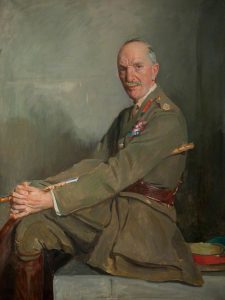
Churchill proved him correct even before the meeting, sending Asquith a memorandum, “Military Aspects of the Continental Problem,” which came to a different conclusion from that of the General Staff. At the meeting, the Director of Military Operations (DMO), Brigadier-General (later Field Marshal Sir) Henry Wilson, gave an appreciation of the situation as seen from Paris, on which the War Office based its planning. The German army fully mobilized, he said, would field 110 divisions, each one 15,000 to 20,000 strong. The figure was sobering, especially when the British contribution to the equation could be, at best, six divisions. Knowing they would be fighting a war on two fronts because of the Franco-Russian alliance, Wilson explained, the Germans would mount a holding operation in East Prussia with twenty-two divisions, while delivering a crushing blow to France, whereupon the victorious divisions would be sent east by rail to defeat the slower-mobilizing Russian bear—the celebrated Schlieffen Plan.
French intelligence believed that the German main effort would be on the Franco-German border, in Alsace-Lorraine, but that in order to envelop the strong frontier defences the Germans would probably disregard Belgian neutrality by marching through the Southeast corner and Luxembourg. Britain had no formal treaty obligations with the French, while under the Treaty of London (1839), she was pledged to guarantee Belgian independence (as were the other major European powers). Precisely how this was to be done was not specified in the treaty, nor ever clarified in the seventy-five years that followed. Wilson argued, however, that the British Expeditionary Force (BEF) might just tip the balance if it came to war.
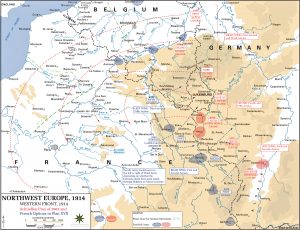
At the meeting, Churchill pressed Wilson on the General Staff’s assessment of German capability and intentions: what would be the effect on the French army, and therefore the BEF, of far greater German strength west of the Meuse than anticipated? His own memorandum concluded, “France will not be able to end the war successfully by any action on the frontiers. She will not be strong enough to invade Germany. Her only chance is to conquer Germany in France” (emphasis added). Churchill calculated that by the fortieth day of mobilisation, “Germany should be extended at full strain both internally and on her war fronts, and this strain will become daily more severe and ultimately overwhelming, unless it is relieved by decisive victories in France. If the French army has not been squandered by precipitate or desperate action, the balance of forces should be favourable after the fortieth day [and improving]….Opportunities for the decisive trial of strength might then occur.”2
For this reason therefore Churchill proposed that the BEF should concentrate not at Maubeuge, as Wilson proposed, but at Tours, midway between Paris and St Nazaire, and that during those forty days the Royal Navy should bring back troops from their imperial bases, replacing them with colonial troops or territorials, and together with yeomanry and Indian troops boost the BEF to some 300,000—more than double that which could be sent at once to Maubeuge.
The DMO was in no mood to give the thirty-sixyear-old yeomanry major’s ideas anything other than a polite brush-off, however, though in fact Churchill had seen a good deal more of war than he had. “Winston had put in a ridiculous and fantastic paper on a war on the French and German frontier, which I was able to demolish,” wrote Wilson in his diary.3 The Germans would not have enough divisions to develop a strong offensive west of the Meuse, he insisted, because of the number they would have to keep in East Prussia, and for their major offensive in Alsace-Lorraine.
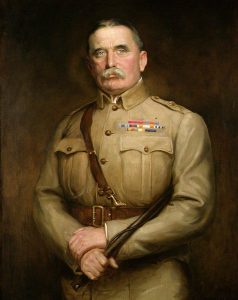
Wilson’s argument for the forward deployment of the BEF would be accepted by default as the basis of planning. Churchill’s consolation was his appointment three months later as First Lord of the Admiralty to reform its staff procedure and align its plans with those of the War Office. Yet Churchill’s memorandum was in fact a paper of extraordinary prescience. In 1914 the BEF, led by Sir John French and consisting of only four infantry divisions plus the Cavalry Division (two divisions being held back in Britain because of the perceived threat of invasion), were almost overwhelmed in their first encounter of the war. Exactly three years to the day after the meeting in which Churchill was told that the Germans would not have enough troops to thrust far into Belgium and pose any threat, the BEF was almost overwhelmed at Mons on 23 August. The Germans had crossed the Meuse in strength, for the offensive through Belgium was in fact the main effort, not Alsace-Lorraine, and the four British divisions found themselves astride the axis of advance of two German armies—First and Second. This little force would be joined by a fifth division a few days later when the BEF was in full retreat—only to be caught on the hop as it detrained at Le Cateau—and four more divisions would arrive in turn piecemeal during the next two months and join the fight. The casualties mounted accordingly.
Superior Strategist?
What, then, of Churchill’s 1911 (which he again advocated in August 1914) proposal to keep the BEF out of the fight on the frontiers, to build up its strength to 300,000 and then to make it available for “decisive action” after the fortieth day of German mobilization? In light of actual events, would it have been a better strategy?
What, for example, of the gap that would have been left in the French line of battle? Did the BEF really tip the balance, as is often claimed?
If the French had not been able to plan on the assumption that the BEF would join the line immediately, they would have made alternative arrangements—the normal work of a general staff. With ninety divisions, they had the flexibility. Indeed, even if the decision had been taken on 5 August to hold back the BEF, the French had nine divisions that could have replaced them—the divisions that were earmarked for the army of observation on the Italian border. These could have been put at notice to move as soon as the Italians declared their neutrality on 3 August, and the move begun as soon as French intelligence confirmed that the Italian army, although recalling some reservists to the colours, was not moving to a war footing. Indeed, this is what actually happened: the French Army of the Alps was stood down on 17 August (at which time much of the BEF was still encamped near their ports of landing), but its divisions were then spread thinly across the entire French line. They were all in place when battle was joined, and could have been at Mons instead of the BEF.

Had this happened, the situation at the end of September would have been the same as actually occurred: the French would have mounted a successful counter-attack on the Marne. Having the BEF in the line may well have boosted French morale, but it is unreasonable to suggest that the French would not have been able to manage things on their own.
French General Joseph Joffre had brilliantly improvised and delivered a blow on the Marne that sent the flower of Brandenburg reeling; but it was not enough. He had executed the first two of (in modern parlance) the four requirements of victory: “find” and “fix.” He had found the weak point, the flank of the great hook through Belgium by the armies of Generals Kluck and Bülow, and by the counter-attack had fixed them—temporarily at least—on the Aisne. What he then needed was to “strike” and then “exploit” (cf. Churchill’s “Her only chance is to conquer Germany in France”). Joffre had not, however, been able to create the requisite striking force. What he needed was what the BEF would have had to offer if it had been allowed to build its strength at Tours—a fresh, strong, virtually all-regular army of 300,000.
Joffre did not, however, simply need to attack on the Aisne, to apply more brute force where brute force had already exhausted itself. What was needed was overwhelming force applied as a lever rather than as a sledgehammer. The German flank was not just open in a localized way after the retreat to the Aisne; the entire Schwenkungflugel—the “pivot” or “swing” wing—of the vaunted Schlieffen Plan was extended in an east–west line through mid-Champagne and southern Picardy, and it was beginning to bow back on the right. With each successive encounter on the extremity of that flank (the “race for the sea”), even as the Germans brought up new troops their line backed further north rather than projecting further west.
In the third week of September, therefore, with the Belgians still holding out at Antwerp, a 300,000-strong BEF, fully equipped, its reservists now fighting fit, could have launched a counter-stroke from Abbeville east between Arras and Albert (or even more boldly, further north between Arras and Lille), on a thirty-mile front with strong reserves and artillery. And with simultaneous pressure by the French along the Aisne—indeed, across the whole front (and the Belgians making a sortie from Antwerp)—to continue to fix the Germans on the Aisne so that they could not further reinforce the right, all that the German 1st, 2nd and 4th Armies in Western France would have been able to do to avoid being enveloped was turn through 90 degrees to face west. And they would have had to pivot somewhere that did not form too sharp an angle and therefore a dangerous salient—Rheims, or even Verdun. In the best case for the allies, with the Germans unable to find a natural line on which to try to halt the BEF, and a renewed offensive by the French and Belgians, 1st, 2nd and 4th Armies would have had to pull back to the Meuse.
Even supposing, then, that at that point the Germans had been able to check further allied progress east, the situation on the Western Front would have seen a strategic sea change. The allies, to exploit, could now have used the growing Russian strength on the Eastern Front to advantage: the Germans would have been truly caught between two giant hammers. With so catastrophic an end to Schlieffen, the possibilities are intriguing. The allies would have been in a vastly superior strategic position to that in which they actually found themselves in 1915. The possession of most of Belgium would have been significant in terms of the extra men and materiel available. And the failure of Germany to achieve victory would not have been lost on the neutrals. It was almost certainly impossible that Britain could have avoided war with Turkey, but if it were possible in May 1915 to persuade Italy to enter the war on the allies’ side it should also have been possible to persuade the Dutch and the Danes to consider their position too, especially once the Germans had been removed from the southern Dutch border.
At the very least the BEF counter-stroke, forcing the Germans back into Belgium, perhaps as far as the Meuse, would have given the allies far better ground on which to fight—and with a strong Belgian army, and a much shorter front, and therefore more reserves. At best, an offensive by the allied armies on the Meuse in spring 1915, with Dutch–Danish action directed against Germany, might have ended the war that summer.
Churchill never boasted of his superior military appreciation after the war. In part, recrimination was not in his nature; but also, he bore the failure of the Dardanelles.
Well Prepared
There has never been a British prime minister in time of war who possessed such operational and ministerial experience as Churchill in 1940, nor who furnished so much evidence of sustained, applied strategic thinking, as well as such remarkable energy in looking for tactical, often technical, solutions. The 1911 memorandum shows just how profound was Churchill’s grasp of war in Europe on a Napoleonic scale, at a time when most of the British military establishment was still thinking in small-war terms.
If only his admirals—and Field Marshal Lord Kitchener, his opposite number at the War Office—had had such a grasp and applied themselves to the task, the bold strategic bid to seize the Dardanelles Straits should have succeeded. With incalculable strategic dividends—Turkey knocked out of the war; Bulgaria tempted in on the Entente’s side rather than the Germans’; the Romanians tempted in earlier and with more effect; and above all, Russia kept in the fight (and no Communist revolution).
Clement Attlee, who fought at Gallipoli, and as leader of the Labour Party in 1940 would serve as deputy prime minister from May 1940 until the end of the Second World War, remained convinced that Churchill had been right. In his memoirs he declared: “I always held that the strategic concept was sound. The trouble was that it was not adequately supported. Unfortunately the military authorities were Western Front-minded.”4
Nice as the narrative of “Redemption” is—Churchill learning from his mistakes, just like “Everyman”—it was more the mistakes and misjudgments of others, corrupting sound strategy, that made him determined that the same would never be visited on his premiership.
Endnotes
1. Hansard (Commons), 24 February 1903.
2. CAB 38/19/50, National Archives.
3. Major General Sir C. E. Callwell, Field Marshal Sir Henry Wilson: His Life and Diaries, Volume I (London: Cassell, 1927), p. 127.
4. Clement Attlee, As It Happened (London: Viking, 1954), pp. 49–56.
Subscribe
WANT MORE?
Get the Churchill Bulletin delivered to your inbox once a month.

